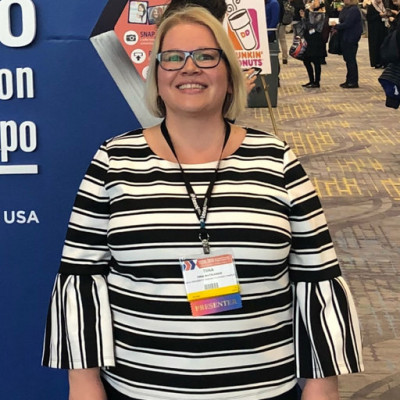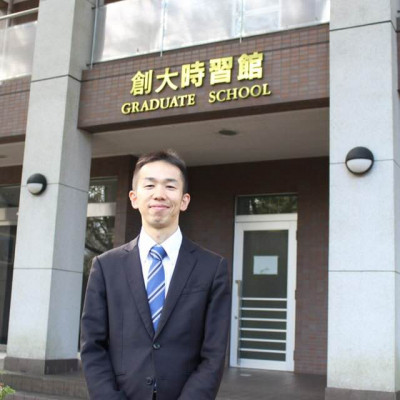Sessions / Zoom 8

Enhancing Business Communication Skills By Teaching Business Cases Online #1361
Knight (2019) explores how business case discussions were conducted with his undergraduate students in Japan in classes held on campus in university classrooms. The COVID-19 pandemic led to the necessity to teach business case discussions online using synchronous and asynchronous approaches, and Knight (2021) investigates how his teaching of business case discussions changed using a checklist of items from Harvard Business School (HBS). The presenter discovered that Knight’s (2019, 2021) approaches for teaching business cases (online) could also be used with relatively low-level English language learners in undergraduate Business Communication classes and with high-level English language learners in a University Extension course for adult business professionals. When leadership is conceptualized as involving communication to create and to achieve visions/goals (Knight, 2013), business cases can be taught online by placing students in learning teams who communicate with each other to identify business problems and propose solutions. In this way, the students are developing their business communication and leadership communication skills. The presenter will discuss his experience of teaching business cases online and explain how threaded discussions can be used to show evidence of improved skills and to enhance discussions and presentations.

The Plain English Movement in the business law ESP classroom #1315
English is used as the lingua franca of international commercial law practice and globalization has ensured ongoing interest in this area of English for Specific Purposes (ESP) around the world. However, the challenges of learning complex legal language can be very acute for the growing body of lawyers and business professionals from non-English speaking backgrounds, including Japan. Widespread criticism of the archaic and technical nature of legalese has led to the development of the Plain English Movement, which is designed to simplify legal English in order to communicate more effectively. The use of plain English refers to language that is clear and straightforward, which makes the law comprehensible and more directly relevant to those who deal with it. As a specialist in teaching legal discourse practices, I present some of the main initiatives in this global sociolinguistic movement (with examples) to demonstrate how ESP instructors can account for these linguistic changes in order to educate business/law students and professionals already working in business law contexts. In particular, I show how the use of plain language in legislative drafting is paving the way for more systematic changes in the use of contracts, legal briefs and client letters of advice. Many professionals in commercial law practice have found plain language to not only save significant time and money, but also generate income by attracting new clients. The same socio-economic benefits can be realized in Japan with more effective ESP pedagogy and communication training in this field.


Textbooks: Publication, Production, Distribution #1228
The Materials Writers SIG is delighted to have Colin Bethell, Director of Sales and Marketing for englishbooks.jp, to discuss the business side of getting your textbook distributed on a nation-wide scale in Japan. Colin will be interviewed by John Carle, program chair of the MW SIG. The discussion will begin with basic level information for people who have never really approached the publishing world. More advanced issues will also be covered such as scaling up production, managing layout, and payments to co-authors. And at the end of the forum, participants will have a chance to ask Colin about any aspect of the textbook publication process. Colin has numerous years of experience in the industry and is very generous with his knowledge. This forum will be a great opportunity for those who are interested in the mechanics of production, distribution, and finance related to textbooks. The catalogue for englishbooks.jp features numerous textbooks by JALT members. The company works with well-established publishers as well as independent publishing houses.

Creating ELF-oriented Lessons Using TED Talks #1275
While ELT is becoming more oriented towards teaching English as an International Language (EIL) or as a Lingua Franca (ELF), most of the ELT materials do not complement the principles of EIL/ELF as students continue to be exposed to native-speaker user models. This presentation illustrates how TED talks by non-native speakers are used to develop listening/discussion lessons for Japanese university students. The presentation will firstly explore the principles for writing ELF-oriented teaching materials. It will then discuss the advantages of using non-native speaker TED talks as teaching material, mainly how exposing students to language user models like themselves can be advantageous. It will then introduce a sample course that uses solely teacher-produced TED talks by non-native speakers.

The need for educational leadership as an aspect of CEFR, and language education in Japan. #1253
The overwhelming majority of K-12 and universities are lead by people without explicit leadership training, other than the occasional seminar. For Japan to progress and join the global ranking of schools, leadership must be considered as an integral aspect and this leadership must adhere to a set of standards that are both student focused and measurable (Green, 2016). This push for leadership is also an integral part of the adoption and implementation of CEFR or CEFR-J standards in Japan. The earliest call for educators to play a role in leadership in the implementation of CEFR was made by Nagai (2010) in the Japanese context and sequentially again by O’Dwyer and Nagai (2012) and O’Dwyer (2015), but since then, it has been largely absent. Nonetheless, with the push to bring the CEFR-J to public schools in Japan much work remains to be done, and a significant aspect of that work lies in the adoption of educational leadership standards and practices.


Materials Development Frameworks and the Challenges of Developing Learning Materials #1322
While ESL textbooks are the primary source of learning materials for many teachers, others favour developing materials to suit their own specific teaching context. Both commercial and locally-produced teaching materials can often benefit by following a framework such as Jolly & Bolitho (2011) that helps materials writers to identify and then target the needs of the learners. This session presents the findings of survey-based research carried out that addressed three areas of materials design within a Japanese context. First, it elicited opinions from ESL teachers primarily working at universities in Japan on how well textbooks meet the needs of their students and showed a wide range of different beliefs which emerge from personal context as much as student needs. Second, it examined the major challenges teachers encounter in designing their own materials and demonstrated the importance of the availability of time. Finally, it investigated whether ESL teachers in Japan adhere to a materials development framework and again showed a wide range of beliefs and rationales.







A CEFR-informed Action Research Model: Developing a research plan. #1244
The JALT CEFR & LP SIG is currently supporting teacher-researchers through a collaborative Kaken research project entitled “Language Education reform using action research: Putting CEFR’s educational principles into practice”. During the Forum, project participants will share the research plans they designed using Stage 1 of a CEFR-focused Action Research Model (CARM) developed by the SIG. These plans were designed in part through collaboration facilitated during workshops held in the first year of the project. The SIG forum will be an opportunity to discuss Stage II, the implementation of the research plan which involves two aspects: the participants’ plan to (1) trial proposed solutions to their teaching-learning dilemma (i.e. the focus of their research plan), and (2) collect data to critically examine the effectiveness of this solution. Forum participants are encouraged to contribute to this ongoing collaborative process to help move these research projects forward, as well as reflect on their current practice and consider how the CEFR and CARM might be utilized in their own contexts. The forum will conclude with a discussion of the strengths and weaknesses of the CARM model and the goals for the second year of the KAKEN project.

Teach it! Write! What We Can Learn from CEFR #1337
Do our students write more than students used to 25 years ago? The internet and smartphones have changed the way that we communicate and interact in our daily lives - even with foreign languages. CEFR offers some insights into how we learn and can teach languages. The presenter will outline the changes in the CEFR Companion Volume (2020) descriptors and suggest practical ways to integrate them into teaching L2 writing. The Companion Volume updates and extends the original CEFR with new descriptors relevant to teaching writing - especially for the lower levels (pre-A1 to B1), as well as for online interaction, plurilingual/pluricultural competence, and mediation. The new descriptors for mediation offer insights into ways to use students’ L1 or other languages (L3, L4 . . .) in target language learning and assessment. The Companion Volume also continues to view students as active social agents in their own learning, to encourage an active learning approach, and to focus on what language learners "can do" - not on what they cannot. In particular, the presentation will focus on CEFR as related to CALL and extensive writing task design.



Global Issues in ER: Why, What and How? #1249
English reading materials pertaining to global issues tend to be short, non-fiction articles in textbooks. In the case of graded readers they are often low level, factual non-fiction or narratives at a level too challenging for most of our learners for extensive reading purposes. Considering that ER programs usually have learners ‘self-select’ the books to read, non-fiction is not often chosen as they may not ‘appeal’ as interesting reading material or may even resemble similar content in other intensive reading classes. Learners are often looking for narratives or strong stories at an appropriate and often lower level. To fill this gap, the authors of this new series of global issues readers will introduce original and compelling narratives that learners may be more inclined to choose and thus become aware of important global issues. Due to the sensitive nature or even invisibility in society of some of the topics, there is often no material at all. This platform provides an opportunity to introduce the topics in a non-threatening, non-graphic and accessible way. This presentation will highlight the issues embedded in the ‘braided reader’ stories, the motivation for writing them and the process involved from pen hitting the paper to publication.

Adapting CEFR Can-dos to Self-access Learning #1247
The Common European Framework of Reference for Languages (CEFR) describes a six-point scale for language abilities/competencies as can-do statements. According to the University of Cambridge (2011), CEFR is frequently used as a planning tool for development of language learning textbooks, examinations, syllabuses and curricula. As well as allowing comparisons of different contexts and programs, when adapted, the can-do statements can clarify the goals and objectives of language curricula into clear and achievable competencies. This presentation will describe a process of aligning existing self-access centre (SAC) facilities to CEFR by adapting can-do statements. Facilities included multi-lingual conversation lounges, an English writing centre and a test-preparation consultation service staffed by students and faculty. I will explain the selection and adaptation of can-do statements and how this process led me to reconsider whether the SAC provided learners the best opportunities to develop their language skills and autonomy. While the pandemic prevented the project’s on-the-ground implementation in 2020, the planned next steps for dissemination of the can-do statements will be described. The presenter will also address the general benefits and challenges of aligning language learning curricula and self-access programs to frameworks like the CEFR.

How Quirky Thinkers Inspired our Organization to Adopt CEFR #1276
There is a dearth of literature on CEFR adoption case studies in the junior high school and high school contexts here in Japan; moreover, the available case studies from the Japanese University context tend to give the impression that such endeavor would be quite an undertaking. Nevertheless, our school, a Japanese private secondary school, took on the challenge of adopting the CEFR as the framework for our English Communication curriculum. This presentation will discuss the process and visualizations that we used, and show how the seemingly disparate ideas of inventor Nikola Tesla and economist Adam Smith provided us with the inspiration to implement the framework in our organization.

Netflix x CEFR: What should our students really be watching? #1307
Recommending that students watch TV shows and films in their second language has long been common practice among educators. While all L2 exposure is to be encouraged, not all content is created equal. We may suggest that students watch a particular show or movie for a variety of readily apparent reasons such as general suitability, subject matter, and entertainment value while perhaps the most important factor that should be considered, the true level of language input, often remains oblique. This presentation will examine the results of a text analysis of a variety of television shows and films that are typically available to students in order to determine which content contains the most comprehensible input for learners across each level. Moreover, an explanation of the methodology behind the analysis will be presented, giving educators the tools to conduct similar analyses and to provide better-informed future recommendations.

Chat-Style Writing in Teaching Conversation #1306
This study analyzes video-recorded interactions of 14 pairs of Japanese university students learning English as a foreign language to determine qualitatively the similarities and differences in their ways of managing pragmatically competent conversations in English before and after incorporating chat-style writing into instruction. Here, chat-style writing is an original teaching method devised by the presenter using relay-style writing, similar to exchanging written messages and SNS chats, for the purpose of encouraging conversation according to the context. Presentation focuses on utterances that answer questions and on ways of using other-initiated repetition (allo-repetition) for backchannels and confirmation of the interlocutors’ comprehension. As a tentative result, the conversation recorded after the adoption of the chat-style writing showed development in the amount and content of answers to questions, and the number of allo-repetitions by the listener was slightly reduced. However, there were several interactions where the interlocutors reverted to Japanese when they could not use English expressions very well. Based on these findings, the author considers the similarities and differences between speaking exercises and writing exercises and scrutinizes this practical method by considering the degree of contribution that chat-style writing can make to conversational instruction.